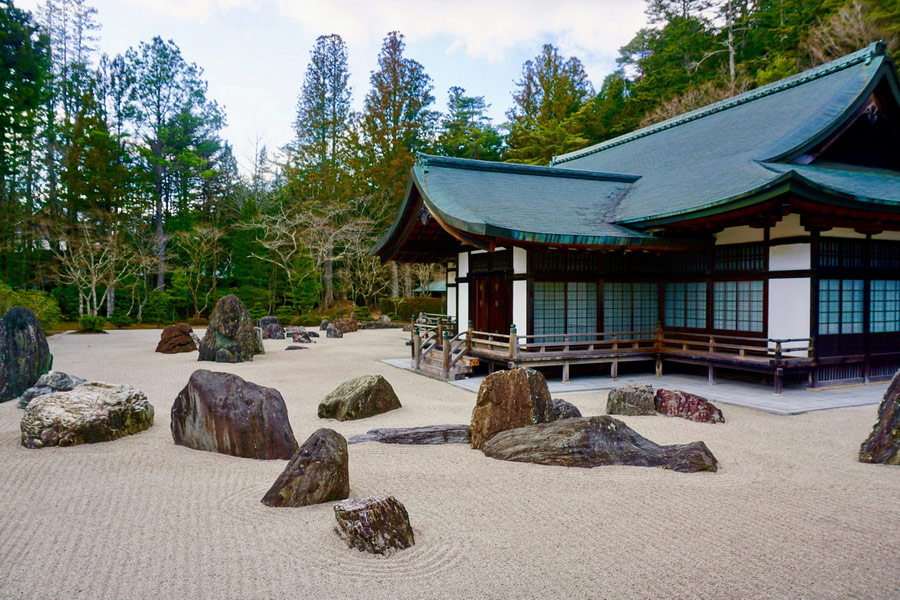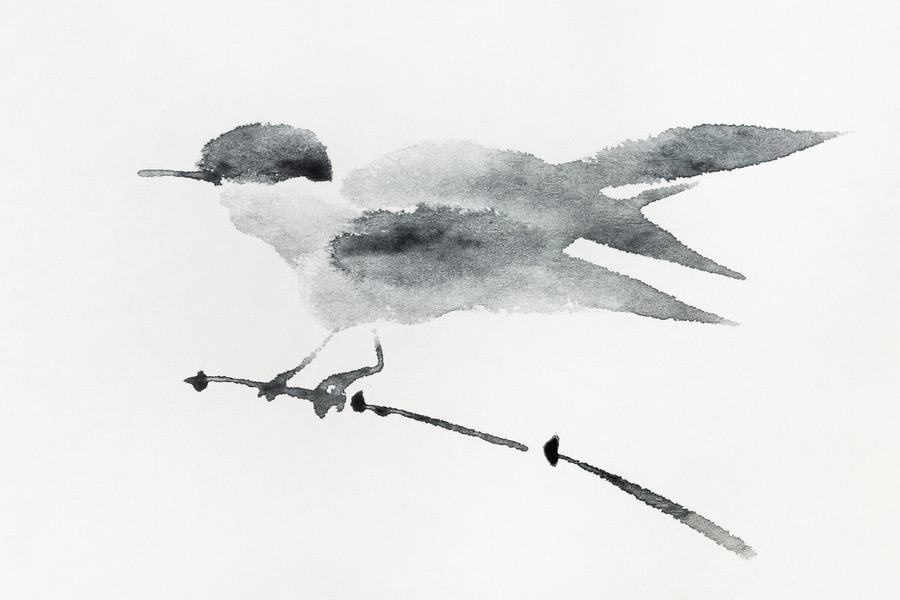Zen Culture in Japan

Japanese Zen Culture
Zen Buddhism in Japan is woven into the country’s rich cultural tapestry. This centuries-long interaction makes it almost virtually impossible to travel through Japan without gaining some perspective on how this religion has impacted diverse art forms and the Japanese people.
Architecture, poetry, theater, painting, and ikebana, among many others, have all been molded by Zen. Visiting Japan with the knowledge shared below will reveal the connections in countless ways.
A Brief History of Zen Buddhism in Japan
During the medieval period, different facets of Japanese culture experienced the influence of Zen Buddhism, with some emerging from Zen fundamentals.
Zen teaching was firmly established in Japan by the late 12th century, while Zen as a cultural force took root in the 14th-15th centuries. It’s worth noting that during tumultuous feudal wars, Zen monasteries stood as peaceful and comfortable havens where almost every aspect of Japanese culture could flourish.
At the outset of the Kamakura Period (1185-1333), the military clans emphasized strictness and simplicity. Over time, however, the Samurai aesthetic ideals underwent a significant shift. Previously, they rejected the luxurious lifestyle and pursuit of beauty embraced by the Heian aristocrats. Notably, Zen Buddhism played a pivotal role in defining aesthetic principles in Japan, with its monasteries serving as religious, cultural, and educational centers of that time.
The religious aspect of Zen was not apparent during the Kamakura period, contributing to a different worldview framework in the Land of the Rising Sun. Consequently, merchants, teachers, artisans, poets, and other practitioners of Japanese art embraced Zen principles.
Zen was closely linked to Japanese people's everyday life, facilitating the advent of art forms like ikebana, the tea ceremony, and landscape gardening. Furthermore, it gave a fresh impetus to painting, poetry, theater, and architecture.
The Zen aesthetic precept is about finding beauty in everything and everywhere, especially in nature. This notion marked a new stage in the understanding of the universe and human placement within it, as expressed through diverse art styles.
To illustrate these processes, let’s look at a few Japanese art examples.
Zen in Painting

Zen Buddhism influenced the development of a unique painting style called “one-corner”. Pioneered by Ma Yuan (1175-1225), it embraced the concept of wabi, denoting poverty and simplicity in a non-literal sense. Artists aimed to portray the essence of subjects using a modest amount of ink. For example, a simple depiction of a bird on a branch or a solitary yellow leaf could suffice to represent autumn. These paintings evoked a desire for self-understanding and a grasp of the eternal. It’s about rejecting yourself and becoming one with nature. One-corner paintings were done with a single brush stroke and were often left unfinished.
During the late 14th century, suiboku, or monochrome ink brush painting, became a leading style. Zen Buddhism was paramount in its evolution. These ink paintings on white scrolls typically followed the Chinese classical landscape scheme and its elements. Additionally, artists depicted birds and flowers, and landscapes always carried subtle overtones. For suiboku artists, predominantly Zen Buddhism monks, symbolism held greater status than mere decoration. Prominent Japanese representatives of this style include Shubun (d. 1450) and Sesshu (1420-1506), who were Zen monks.
- When in Tokyo, visit the Tokyo National Museum to admire Shubun’s most well-known painting, Reading in a Bamboo Grove.
Zen in Poetry

Japanese poetry, particularly haiku, underscores the association of ideas, with the words serving as a background for hidden meanings. Central to the genre are two key elements of Zen teaching: incompleteness and instantaneousness. Simply put, haiku were meant to be uttered during a moment of sudden inner enlightenment, often without conscious thought. Only those who had attained a deep understanding of Zen could truly grasp the essence of this poetry. Similarly, haiku readers had to be spiritually enlightened to comprehend the concealed message within the verse.
Haiku's roots trace back to Japanese traditions, beliefs, mythology, and history, making it a profound expression of the Japanese national character. Many Japanese poets wrote haiku (and still do today); the most celebrated among them was Matsuo Basho (1644-1694).
- Haiku and Japanese culture enthusiasts will love learning about Basho's life and work at the Basho Memorial Museum in Ueno Park, Tokyo.
- Another place worth visiting is the Museum of Haiku Literature, the only library in the world dedicated to collecting and preserving haiku works.
Zen in Theater
The period between the 12th and 14th centuries saw a synthesis of various drama genres. The best example of this synthesis is Nogaku, or simply Noh (“skill” or “talent”), which incorporated Zen ideology. Kan’ami Kiyotsugu and his son Zeami Motokiyo created Noh, giving it the shape we recognize today. Both were popular actors of their time.
How can Zen Buddhism be observed in Noh? Historically, Noh actors and theater directors catered to an audience that shared Zen aesthetic views. This means that regardless of the plot, its composition, narration, and other artistic expressions adhere to Zen concepts. Banality, predictability, and clarity are always avoided. Actors communicate the deepest nuances through a single, humble note or gesture.
Zen in Architecture

During the Kamakura period, Zen aesthetic principles influenced architecture, manifesting in temples, shrines, residential buildings, and various structures. The religious and secular architectural styles overlapped, changing the visual appearance of buildings during this era.
The intensive construction of Zen temples in the capital and peripheries started in the 13th century, emphasizing strictness and simplicity. They differed from the earlier, more ornate Buddhist structures. Pagodas were replaced with simple reliquaries, and altars, usually adorned with multiple sculptures, almost vanished. Sculptures and paintings depicted only Zen Buddhist patriarchs and prominent leaders. Meanwhile, the aesthetic importance of the priests’ and monks’ quarters and bathhouses increased.
Zen’s rationalism rejected sutra reading, idol worship, and ritual observance. Instead, it emphasized meditation, concentration, self-control, and achieving enlightenment through daily activities. This doctrine significantly influenced the design and function of temples, leading them to reflect the simplicity and aesthetics of the Japanese lifestyle.
The best examples of such architectural style are the Golden Pavilion and the Silver Pavilion in Kyoto. They exemplify the exquisite fusion of palace architecture and residential design with Japanese tatami floors.
- Pay close attention to the minimalist design of the Katsura Imperial Villa in Kyoto and the Ise Grand Shrine in Ise, Mie Prefecture.
- For a glimpse into contemporary Japanese architecture, explore the minimalist masterpieces of Tadao Ando, a renowned modern Japanese architect.
Zen in Japanese Garden Landscaping

The Heian nobles’ residential complexes featured standard gardens with an artificial river and an island in the center, a must-have attribute. However, the spread of Zen Buddhism gave rise to the rock garden, which has roots in Japan’s ancient Shinto religion.
Rocks and stones, vivid symbols of the Japanese dry garden, are strategically placed to create an exotic backdrop. This setting fosters concentration, contemplation, and a sense of freedom from worldly bondage, along with profound quietness.
Zen Buddhism and Tea Ceremony

Tea was introduced to Japan in 729, but it wasn't until the 12th century, during intense Japan-China relations, that it gained popularity and became an essential aspect of Japanese life.
Initially, tea was used as a tonic, but its religious significance increased with the growing popularity of Zen Buddhism. It evolved into an intricate procedure designed to facilitate the achievement of a spiritual state and the understanding of Buddhist teachings.
Historical records indicate that monk Eisai, the founder of the Rinzai school (a branch of Zen Buddhism), brought green tea leaves from China in 1191. He planted them in the Hirado region (now Nagasaki Prefecture) and initiated tea cultivation for religious rituals. Eisai authored the first Japanese book on tea’s benefits for health, titled "Kissa Yojoki" (Drinking Tea for Health).
As an art, the tea ceremony transformed into a leisure and relaxation activity. Tea ceremonies were conducted in small tea houses, known as chashitsu, located deep within parks or gardens.
Zen in Ikebana

The art of flower arranging, known as ikebana, has its roots in the tea ceremony. However, it dates to the spread of Buddhism in Japan in the sixth century. Initially, flower offerings to deities were part of daily rituals, evolving into a distinct art form holding a revered position in Japanese culture. Various ikebana schools, each with unique flower arrangement rules, continue to operate to this day.
Ikebana schools' philosophies align with Zen Buddhism, emphasizing the unity of all things ("All as one and one as all").
The ikebana artist strives to showcase each flower's individuality, enhancing the beauty of the surroundings. The guiding standards of Zen are evident in the art of Japanese flower arranging: simplicity, asymmetry, and a sense of incompleteness that creates a harmonious composition.
Presence of Zen in Japanese Sports

Zen is also present in many traditional martial arts of Japan, such as kendo (“sword path”). Zen masters provided their students with both sword techniques and mental readiness for death. Among Japan’s famous swordsmen, Miyamoto Musashi stands out for his ability to merge the spirit of Zen and the spirit of the sword.
The Japanese path of the sword comprises more than just a set of fighting skills. It represents a complete way of life according to the Samurai code, which is influenced by Zen Buddhism, Shintoism, and Confucianism.
In Zen fencing, “immovable wisdom” is the mental attitude one must cultivate. The goal is to attain the peak speed in the mind while remaining physically motionless. The state of mind is paramount.

